My woolly bugger fly box
{{start}}
My first fish on fly fell to the magic of a Woolly Bugger and many have gone the same way since then.
My understanding is that the Woolly Bugger has its origins in America where it appears to be tied, as a leach imitation. having said that there is also an English fly with bead chin eyes called a Dog Nobler that is very similar to a traditional Woolly Bugger. Whatever the name or origin this style of fly is a great fish taker in a wide range of conditions. There are probably more variations to the Woolly Bugger than I have had breakfasts. Some are over-dressed some under-dressed, some weighted others not, on all sorts of hooks and in all sorts of colour combinations. Most will work sometimes but many are “once of” flies that don’t consistently take or attract fish.
I have tried out many over the years and now carry a range of Woolly Buggers that have specific applications. In each case they have a reason for being and they have been proven over time to take or attract fish.
My basic tie for a Woolly Bugger is similar to so many others. Having said that I do have a few quirky criteria that I strictly adhere to every time I tie a Woolly Bugger.
Throughout this web site I describe my woolly buggers according to size as set out in the following table:
MINI = approximately 20mm
SMALL = approximately 30mm
MEDIUM = approximately 40mm
STANDARD = approximately 50mm
LARGE = approximately 60mm
XL = approximately 70mm
{{end}}
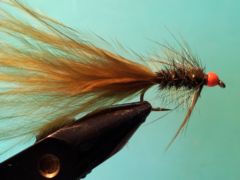
{{+1}}BH olive damsel bugger{{-1}}
{{start}}
At different times of the year you will start to see swallows dipping on the water feeding on midge. This is the time to start thinking about fishing either damsel buggers or olive woolly buggers because unfortunately for the midge it's not only swallows that have them on their menu it's also carnivorous damsel nymphs. Damsel nymphs come in a range of colours ranging from dull browns through to light and dark olives.{{end}}
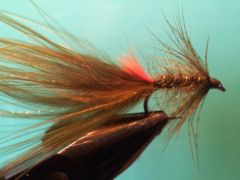
{{+1}}Mark II woolly bugger – alternate tie{{-1}}
{{start}}
The MK 2 woolly buggers evolved from standard black and olive woolly buggers as a fly that would imitate an American frog that had bright red between its hind legs and consequently the red tag is traditionally tied in below the tail. This tie is a little more popular than the original tie these days and is main point of difference is that the tag tied in on top.{{end}}
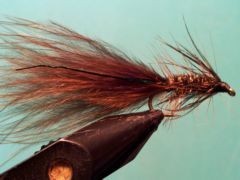
{{+1}}Brown damsel bugger{{-1}}
{{start}}
Unfortunately for the midge it's not only swallows that have them on their menu it's also carnivorous damsel nymphs and then of course further up the food chain trout.{{end}}
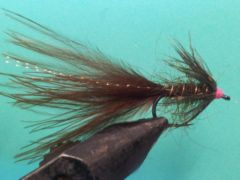
{{+1}}Brown pink hot head bugger{{-1}}
{{start}}
You can of course tie a hot head on any fly and from time to time when I am tying flies I add hot thread head to a couple of flies just to ensure that I have some options in my fly boxes. This fly takes the hot head concept to the next step and includes a bigger than average thread head which is a significant feature of the fly.{{end}}
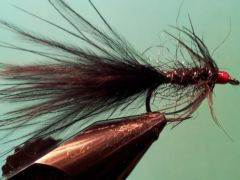
{{+1}}Black and red hot head bugger{{-1}}
{{start}}
I generally only tie it in two versions the fly described below and a brown and pink version. Particularly if the water is a little discoloured I find these flies work well either as middle dropper attractor flies or as my top dropper bob fly but from time to time also fish them on the point particularly if fish are switched onto small flies.{{end}}
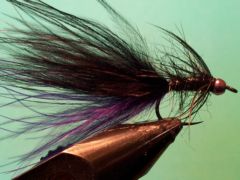
{{+1}}BH Tassi bugger{{-1}}
{{start}}
I have used it and this bead head version many times since to great effect. Like most woolly buggers it is often best when fished with short sharp twitching movements in order to make the marabou and hackle ‘work’ but its worth experimenting with a range of retrieves from dead drift through to “roly poly” to see what's working on the day.{{end}}
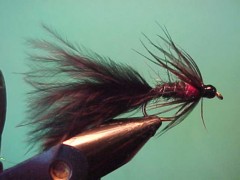
{{+1}}Bead head bibio bugger – Chatto’s original{{-1}}
{{start}}
I use this fly as a point fly for when both boat and bank fishing and have developed three versions. The standard non bead head version is tied on Knapek L series hook in size #8 and has 6 wraps of .015 lead wire hidden in the body and an overall finished length of around 45 mm. A mini bugger version is tied on Knapek L series hook in size #10 and has 4 wraps of .015 lead wire hidden in the body and an overall finished length of around 30 mm. I also tie a bead head version on a Tiemco 3769 hook in size #8 which incorporates a 3 mm black tungsten bead.{{end}}
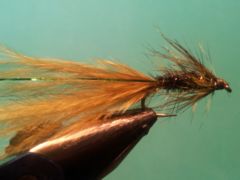
{{+1}}Olive damsel bugger{{-1}}
{{start}}
Keep an eye for swallows dipping on the water feeding on midge. That's a sure sign that there will also be damsel nymphs around and then of course further up the food chain there are likely to be trout feeding on both the midge and the damsel nymphs. This is the time to start thinking about fishing either damsel buggers or olive woolly buggers.{{end}}
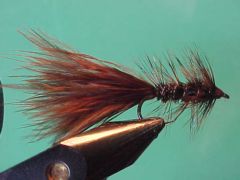
{{+1}}Brown woolly bugger{{-1}}
{{start}}
This is my favourite. I have absolute confidence in this fly and it's my default point fly in fly fishing competitions. That of course doesn't mean that I don't fish other woolly buggers or woolly bugger variations with specific applications in particular fisheries but it does mean that if the buggers that should work (eg a Magoo in Purrumbete or a Tassi bugger in Arthurs lake) isn't working then I will always give my brown bugger a swim.{{end}}
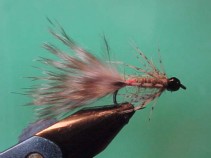
{{+1}}TBH hot butt caddis bugger{{-1}}
{{start}}
If your fishing in water with reasonably numbers of caddis your going to want to give this 3 cm bugger a swim. Caddis represent up to 70% of a trout's diet and whilst this fly is bigger than any caddis nymph I have seen trout love it. It is also a must tie on fly for discoloured water. You can fish it as a nymph but my preference is to fish it across, down and on the swing.{{end}}













